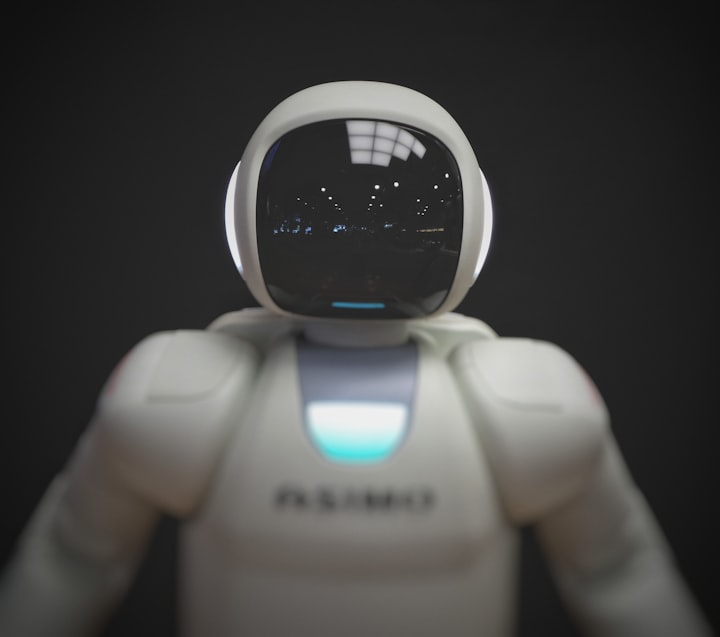Humanoid Robots
Advancements in Robotics Technology

Humanoid Robots: Advancements in Robotics Technology
Introduction to Humanoid Robots:
Humanoid robots are advanced machines designed to resemble and interact with humans. They aim to replicate human-like movements, behaviors, and cognitive capabilities, making them versatile and adaptable for various applications.
Mimicking Human Physiology:
Humanoid robots are engineered to replicate human physiology, including features such as a head, torso, limbs, and joints. This enables them to move and interact with their environment in a manner similar to humans.
Natural Language Interaction:
One of the key advancements in humanoid robots is their ability to understand and respond to natural language. They can recognize speech, interpret commands, and engage in meaningful conversations, enabling more intuitive human-robot interactions.
Emotional Intelligence:
Humanoid robots are being developed with the ability to perceive and express emotions, making them more relatable and empathetic. They can detect facial expressions, tone of voice, and body language, allowing for more nuanced communication and engagement.
Assistive Roles:
Humanoid robots have the potential to assist humans in various domains. They can be utilized in healthcare settings to provide companionship to the elderly, assist with rehabilitation exercises, or support individuals with disabilities in performing daily tasks.
Industrial Automation:
Humanoid robots are increasingly being employed in industrial automation, particularly in manufacturing and assembly processes. Their dexterity, precision, and adaptability make them ideal for complex tasks that require human-like manipulation and decision-making.
Education and Research:
Humanoid robots are valuable tools in educational settings. They can be used to teach programming, robotics, and other STEM subjects, providing hands-on learning experiences. Additionally, researchers utilize humanoid robots to study human cognition, behavior, and social interaction.
Entertainment and Hospitality:
Humanoid robots are making appearances in the entertainment and hospitality industries. They can act as greeters, performers, or guides, enhancing customer experiences and providing unique forms of entertainment.
Personal Assistance:
Humanoid robots have the potential to become personal assistants, helping with tasks such as household chores, scheduling, reminders, and information retrieval. They can adapt to individual preferences and provide personalized support.
Remote Operations and Telepresence:
Humanoid robots equipped with advanced sensors and cameras can be remotely operated, allowing users to interact with distant environments. This technology finds applications in areas such as remote inspections, disaster response, and space exploration.
Social Robotics:
Humanoid robots are increasingly being designed to facilitate social interaction. They can engage in conversations, express emotions, and adapt their behavior based on the context, fostering social connections and addressing feelings of loneliness.
Cognitive Abilities:
Advancements in artificial intelligence and machine learning enable humanoid robots to possess cognitive capabilities. They can learn from experiences, recognize patterns, and make informed decisions, enhancing their problem-solving and decision-making skills.
Ethical Considerations:
The development and deployment of humanoid robots raise ethical considerations. Discussions are ongoing regarding issues such as privacy, consent, job displacement, and the potential impact on human relationships.
Human-Robot Collaboration:
Humanoid robots are designed to collaborate with humans, complementing their skills and capabilities. They can work alongside humans in industries such as healthcare, construction, and manufacturing, enhancing productivity and safety.
Future Possibilities:
As humanoid robotics technology continues to advance, the possibilities are vast. The integration of sensors, artificial intelligence, and advanced materials may lead to humanoid robots that are more autonomous, intelligent, and capable of performing a wide range of tasks.
In conclusion, humanoid robots represent a significant advancement in robotics technology. With their ability to mimic human physiology, interact naturally with humans, and perform various tasks, they have the potential to revolutionize industries, support human needs, and contribute to societal advancement.
by fx tech.
About the Creator
Abdullahi Mustapha
Abdullahi: Skilled forex trader with 3 years' experience. Amazon KDP expert and programmer. Pursuing a diploma in computer science. Youthful, yet wise. Passionate about technology and finance. Ready to make an impact in forex,






Comments
There are no comments for this story
Be the first to respond and start the conversation.